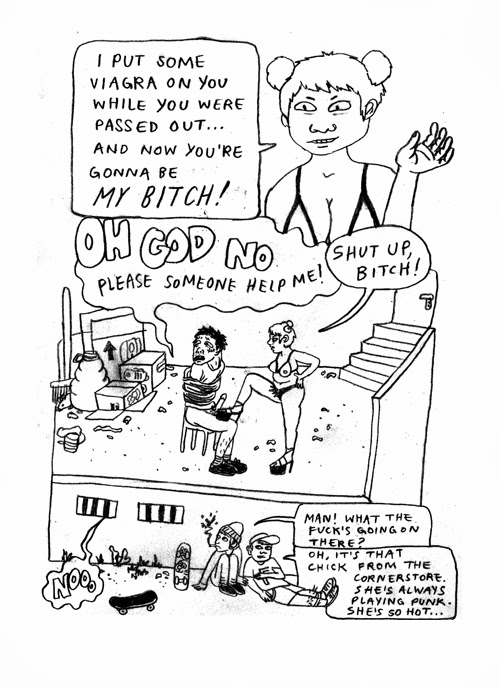Inés Estrada // *1990, Mexico. Inés is an illustrator and comics maker from Mexico City. Every day she is exposed to huge amounts of car smog and colours that might have damaged her brain for worse. She enjoys making sandwiches and stickers and together with Ginette Lapalme co-edits the bilingual anthology Gang Bang Bong. Her self-published book 'Ojitos Borrosos' was nominated for the 2012 Ignatz awards in two categories - "Outstanding artist” and “Best collection”.
Find her on tumblr and visit her colorful webshop!
Inés: This is my studio. It is also my bedroom. And also the only room in my house! I live in a really small apartment, but I like it that way. I love the orientation it has, it gets sunlight all day, which is perfect for drawing. I live in Mexico City, and let me tell you, we have sunlight for 12 hours all year round. It’s a beautiful thing that sadly everyone takes for granted here... I can tell you that I wouldn’t be able to survive somewhere like Latvia with such harsh, dark winters!
I started working on Borrowed Tails around April this year. Since the beginning I was
sure I didn’t want to do one long story but rather a collection of short comics. My process is very impulsive and not very thought out. The ideas for the stories came from dreams, modified anecdotes or stories my friends told me. Going on walks helps me string my ideas together more coherently. Then I get back and scribble the ideas. I always have a list of ideas of comics I’d like to do, but I never do all of them. Some are boring or don’t make any sense. Once I choose a good one, I do a sketch of the comic. Here is the sketch for the first story, Beeing.
Then I go straight to the final drawing. For this I used a pencil. I use the cheapest materials because finding good art supplies here is not very easy... and it is way too expensive. Also I guess I just don’t really care.
Once I have the finished pencil drawing, I scan it and then up the blacks in photoshop. Here is the first page of that same story.
I wasn’t very sure of how to do the colouring in the beginning. At first I wanted the book to look like an old comic book, with flat colors made of halftones. But it turned out not looking as good I thought it would. So I decided to go with watercolors, which are actually my favourite way of colouring. It was silly of me not to chose them from the start. Here is a comparison of the first page of Skunk Girl, the left one is digital and the right one is watercoloured. (click to view bigger!)
For watercolouring, I print the photoshopped version of the original pencil drawing (the one with the intense black) in my laser printer, then I watercolour it. I use really cheap paper, which wrinkles a lot, but I kind of like the effect.
I ended up doing like 10 pages of comics that weren’t included in the book. I thank
David and Sanita for helping me decide which were the best comics to publish in it.
Here’s a page of one of those stories, Look but don’t touch. Actually this one they really liked but I felt it was too intense and was out of place with the rest of the stories.
Ok, back to the process of the finished pages... once they’re watercoloured and dry, I
scan them and Photoshop them again. Just some small details: change the background colour, correct the saturation, adjust the format... And then it’s done!
Many thanks to Inés for this fun insight! If you haven't seen her mini kuš! yet you can get it from our our webshop or also directly from her! Inés Estrada's comics have previously also appeared in kuš! #8 'allotments', š! #9 'female secrets' and š! #13 'live is life'.
Previous 'Behind the Comics' reports you can read here.









No comments:
Post a Comment